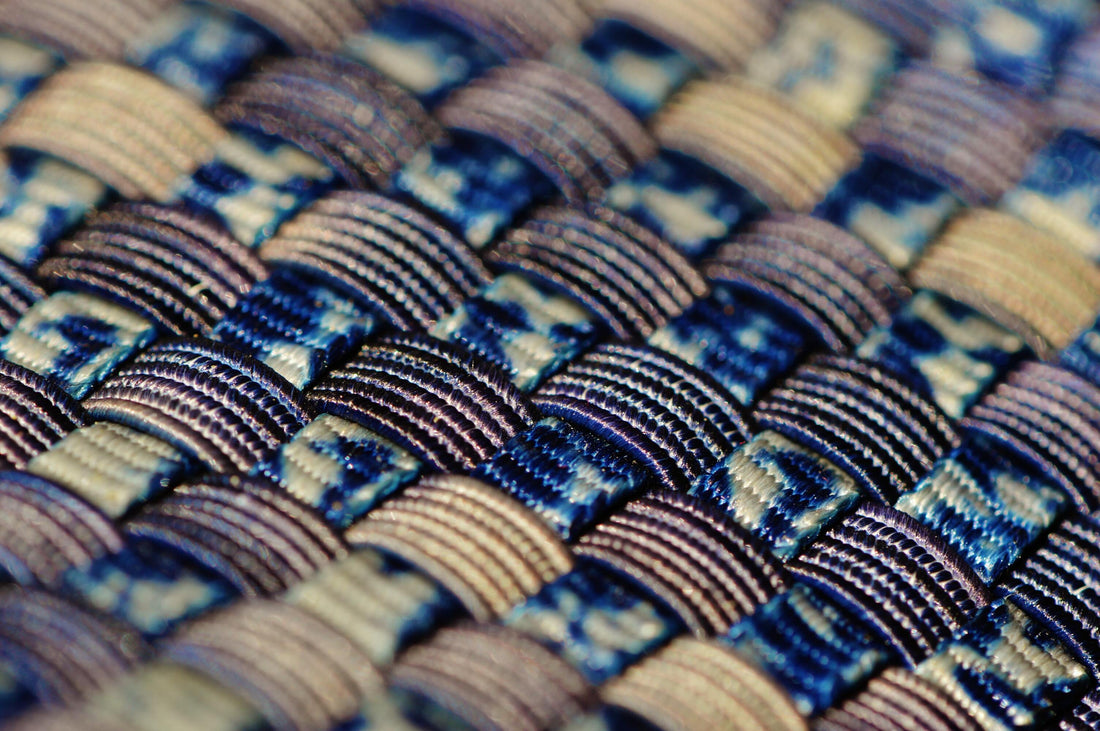Weaving is an ancient technique for making fabrics and has a long history dating back to prehistoric times. Weaving can create different patterns and textures that can be used for a variety of applications. In this post, we'll take a closer look at what you can do with weaving.
Are you interested in looms, weaving frames and accessories? Then take a look at the selection from the Berliner Webstuhl Manufaktur . We offer a wide range of products related to weaving and deliver within Germany in 2-7 working days.
Manufacturing of fabrics for garments
One of the most common uses of weaving is in the manufacture of garments. This should come as no surprise. Weaving techniques can be used to produce various fabrics, which can then be used to make garments such as shirts, pants, skirts and dresses. Cotton, wool, silk and linen are some of the most common fibers.
Weaving also allows different patterns and designs to be incorporated into the fabrics. This means that garments can be created with different textures and patterns that are unique and have a personal touch.
Manufacture of carpets and carpet runners
Another popular use of weaving is in the manufacture of carpets and carpet runners. The weaving technique can be used to produce various types of carpets, including flat carpets, deep pile carpets, and carpets with patterns and designs. Cotton, wool, and silk are some of the most common fibers used to make carpets.
Weaving also allows for the production of rugs and carpet runners in a variety of sizes and shapes to suit any room. Rugs and carpet runners can also be made for outdoor use and are a great way to decorate patios, porches and other outdoor areas.

Manufacture of bags and accessories
Weaving can also be used to make bags and accessories. Bags, backpacks and purses can be made from fabrics woven with different patterns and designs. Weaving also allows bags and accessories to be made from different materials, including cotton, wool, silk and synthetic fibers.
Weaving can also be used to make accessories such as scarves, hats and gloves. Scarves and shawls made from woven fabrics are particularly popular as they can be made in a variety of patterns and colours and are a brilliant way to add a personal touch to any outfit.
Manufacturing of furniture covers
Weaving can also be used for making furniture covers. The weaving technique can be used to make different types of furniture covers including sofa covers, chair covers and armchair covers. Cotton, wool and synthetic fibers are some of the most common fibers used for making furniture covers.
Weaving also makes it possible to create furniture covers with different textures and patterns that will enhance the room and add a personal touch. Furniture covers made from woven fabrics are particularly popular as they offer a fantastic way to breathe new life into old furniture and give any room a new look.

Production of wall hangings and decorations
Weaving can also be used for making wall hangings and decorations. The weaving technique can be used to make various types of wall hangings and decorations, including tapestries, picture frames, and curtains. Cotton, wool, and synthetic fibers are some of the most common fibers used for making wall hangings and decorations.
Weaving also makes it possible to create wall hangings and decorations with different textures and patterns that will spice up the room and add a personal touch. Wall hangings and decorations made from woven fabrics are particularly popular as they are a great way to add an artistic element to any room.
Production of towels and tea towels
Weaving can also be used to make towels and tea towels. The weaving technique can be used to make different types of towels and tea towels, including hand towels, guest towels, and tea towels. Cotton and linen are some of the most common fibers used to make towels and tea towels.
Weaving also makes it possible to create towels and tea towels with different patterns and designs that will enhance the room and add a personal touch. Towels and tea towels made from woven fabrics are particularly popular as they are an excellent way to add a practical element to any room.
Summary
Overall, weaving has a wide range of applications, from making garments and rugs to bags, furniture covers, wall hangings and towels. Weaving also allows for different patterns and designs to be incorporated into the fabrics, which can spice up the room and add a personal touch. The weaving technique allows fibers such as cotton, wool, silk and synthetic fibers to be used to create a wide range of products suitable for different applications.


